Breathe properly sooner
 Tuesday, May 19, 2020 at 11:00AM
Tuesday, May 19, 2020 at 11:00AM -----------------------
Liara Covert, Ph.D
Insight of the Moment
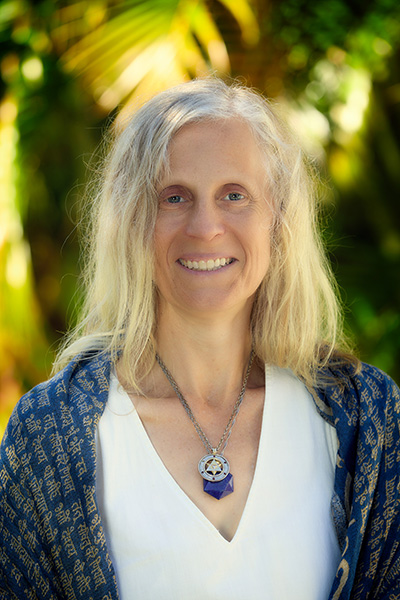
"Where to from here is shapes by your vision and will." -Liara Covert
Books
*Mastering Time
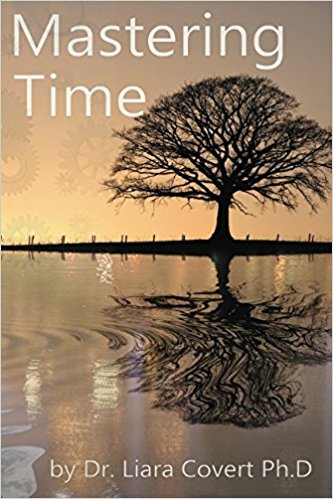
365 Paths to Love
Contact us (paperback)


Be Your Dream
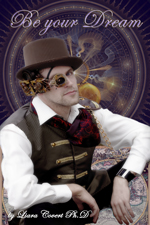
Transform Your Life
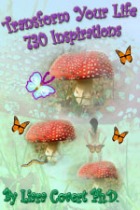
Cosmic Synchronicity
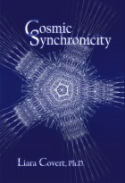
Self-Disclosure


 Tuesday, May 19, 2020 at 11:00AM
Tuesday, May 19, 2020 at 11:00AM  Thursday, December 12, 2019 at 9:18AM
Thursday, December 12, 2019 at 9:18AM Ever feel like a peice of wood drifting through life, not going in the direction you want to go? Is it clear to you how you got where you are today? Do you feel drawn to change anything?
Living consciously is about taking control of your life, about making deliberate decisions rather than making decisions willy-nilly without thought. This is about consciously creating the life that we want rather than settling for the one that somebody tells us we deserve. Consider these 10 steps to more conscious living;
1. Reflect regularly on your life
This involves reflecting on who you think you are, how your feel and behave in different situations. It includes growing more aware of patterns playing out through your relationships and being open to change.
2. Reflect on how you spend your time
Notice whether you focus attention on what matters most to you or, whether you are working toward doing that in the future. The key is to find courage to stop doing things that do not stimulate creativity or fulfull you, to stop interacting with people who do not matter, stop spending money on stuff we do not need to impress people. What would you ideally be doing and where?
3. Nurture your sense of humor
Laughter is brings balance and recalibrates well-being. What tickles your funny bone? Laugh longer & more often. Spend time with children who giggle and animals that play spontaneously. Be open to allowing some of this to rub off on you. Allow yourself to be silly. Be okay with it. Lose the conditioned fear of embarassment.
4. Review life goals often
Notice what you truly feel destined to do with your gifts and talents. Are you are in sync or off track? Ru moonlighting? Its useful to grow aware of the nature of distractions we create or excuses we make to hold ourselves back from doing what the heart knows fuels our spirit.
5. Reflect on your impact on the environment
This includes what you eat, how its produced, how far it travels to get to you. How do you feel when you eat? Are you being authentic, eating what feels right or making changes as your body gives you signs to do so? Which modes of transport do you use? Be mindful that everything we do affects more than us, but everything around us in some way.
 Tuesday, August 6, 2019 at 6:51AM
Tuesday, August 6, 2019 at 6:51AM 
While recently experiencing the Open Day activities at the local Chenrizig Institute, I had the pleasure of meeting Adrienne Strong. She hosted an introductory workshop about Buteyko Breathing and co-runs the Windhorse Heath Clinic with her partner. It is an honor to connect with her again here and to engage in a more in-depth interview. Thanks Adrienne!
Thank you for the interest and opportunity to be involved in your work.
Please share a peak experience in your life.
I have been a Buddhist for many years and an asthmatic since birth.
How do these peak experiences shape you?
I suppose learning to meditate was a way to calm my otherwise anxious and busy mind, and the Buddhist philosophy made sense of an otherwise chaotic and speedy world.
Many people seek to quiet the mind and often turn to meditation from different traditions. Any other reasons why specific meditation practices resonate?
Buddhism also came to me to blend with my artistic bent. It made my otherwise "fruitless" degree in Visual Arts, more useful. I have been able to sculpt many decorations and statues for the Enlightenment Garden and the Gompa at Chenrezig Institute.
Visiting these gardens allows one to feel their uplifting energy. Such projects remind us that our initial expectations for training do not always envision ways we nurture unseen talents and allow them to blossom. Garden design ability is a gift. Other than being in nature, how do you come to focus on health and the breath?
Many years ago, in the early 1990s, post-degree, I was living in Melbourne. I heard vicariously about this Buteyko Breathing method...
Funny, is it not? What seem like coincidences at certain stages of life later turn out to feel like synchonicities that are planting a seed to grow.
Yes! Anyway, I heard this method was greatly helping people with asthma, anxiety and sleep disorders. At the time I was studying a post grad masters in Film & TV, and living on a very small stipend to get by.
What sparked your curiosity about Buteyko breathing?
Whilst Buteyko was getting a lot of attention and amazing results, there was little information around what it was, and to do a course was over $1000, way out of my financial reach as a struggling University student. I sort of focused on other things, out of necessity.
Sounds like you wanted to know more, but the timing was not right. What was the turning point?
Skip 20 years forward, and I was living on asthma medications. I couldn’t sleep without having a Ventolin inhaler at arms-reach. I would be at the chemist at least every month to replenish my supply. My heart was starting to regularly palpitate and cause even more anxiety than just the inability to draw breath.
Clearly, you were faced with huge health challenges. It is said we do not truly value the breath until we struggle to breathe. How did Buteyko re-enter your life?
My wonderful health practitioner partner had bought me an on-line course in Buteyko for Christmas 2016, and was kind enough to do the course with me. It was an on-line Zoom course with a well-known Sydney naturopath and Buteyko teacher, Mim Biem at a cost greatly reduced to original Buteyko classes of the 90’s. Four weeks later, upon completion of the course, I was astounded in the results I was experiencing.
Please be more specific.
Well, I hadn’t used my Ventolin at all since two weeks into beginning the course as my breathing was so much better. Yet, more importantly, my anxiety was improving, my constipation was suddenly manageable and by doing breath hold exercises, I had so much energy! It was the beginning of a new me.
A friend of mine has also healed her asthma and depression from consistent breathwork. Its inspiring to connect with people who know first-hand the power of the breath to reconnect them to well-being. How would you now describe the impact of Buteyko breathing for you?
As months went by, I kept doing the exercises and kept improving. Buteyko is like peeling back an onion of sorts. It is said that for every year of Buteyko breathing, you are undoing the results of 10 years of dysfunctional breathing.
Wow! Shifting from the perception of dysfunctional breathing to normalized breathing...that is huge with far-reaching implications! What guided you to teach Buteyko breathing?
In October that year, Mim was holding a teachers training course in Sydney. The event was led by well- known author and Buteyko practitioner, Patrick McKeown.
Love the Ted Talk by Patrick McKeown who is also known for the Oxygen Advantage.
Indeed. My partner Carey, being an ayurvedic natural therapist, was so impressed by this Buteyko modality, had decided to attend. I ummm’d and aaaah’d about attending the training with him, having such a wonderful improvement in my own asthma & overall health.
What prompted you to hesitate?
As an artist & disability support worker, I couldn’t initially see how this would fit into my working life. Glad I followed my intuition. I can honestly say, enrolling in that training was the second most wonderful thing I have done, next to the course with Mim. Not only did it encourage me to improve and continue with my own Buteyko practice, but gave me ability to spread these valuable techniques to help others help themselves.
Who are your other inspirations?
Given my focus on Buteyko breathing, the founder of this technique is a big inspiration. Professor Konstantin Pavlov Buteyko was born in the Ukraine and originally studied engineering at Kiev Polytechnic Institute.
What prompted Buteyko to investigate breathing?
After a brief enrolment in Russia’s armed forces during World War II, Buteyko ended up studying “the most complicated piece of machinery of all”, the human body, at The First Medical Institute in Moscow. In Buteyko’s third year of study, he was given a practical assignment in his clinical therapy group, monitoring the breathing of diseased & dying patients. He soon realised that the unwell patients he was observing were hyperventilating. As the diseases would progress, and their inevitable demise would get closer, their breathing became faster and deeper. At first he wasn’t certain as to whether the illness was causing the hyperventilation or the opposite, but one way he decided he could find out was to work on reducing the quantity and speed of breath.
Okay- slow the breathing down, slow the the onset of death. In ancient India, the belief exists that duration of life (mortality) is based on a finite number of breaths. What is less often known is the duration and nature of these breaths.
What is unique about Buteyko's approach?
Buteyko first began experimenting on himself and realised that when he calmed and lessoned his own breath, he could ease his headaches & greatly reduce his own high blood pressure. Also he would ask healthy subjects to take big breaths and breathe rapidly for a period of time, and found that they would become nauseous and dizzy, then develop wheezing and coughing from the subsequent asphyxiation, until eventually the subjects would feint.
So many people believe that if we struggle to breathe, then breathing faster is the answer. As a former asthmatic, you know breathing faster does not harness more much-needed oxygen. What did Buteyko discover about hyperventilation?
After an enormous amount of study, observation and trials, Buteyko was convinced that reducing hyperventilation was causing sick people to recover from their illness. He began developing a series of exercises which people could use to reduce and calm their breath. Using breath hold and relaxation exercises, ultimately uses neuroplasticity to recalibrate the respiratory centre in the brain. Automating this new way of breathing, less in volume, but diaphragmatically, greatly increases oxygenation to tissues, muscles, organs and cells and is what is now commonly known as “Buteyko”.
Who do you feel can benefit from Buteyko Breathing?
Buteyko is a beautiful fit for anyone who meditates or practices mindfulness, as it naturally brings you quickly to states of calmness and wellbeing. It was a missing piece from the puzzle of good health for me, which has not only nourished my meditation practice but made so many previously undoable activities possible. A good test for my Buteyko came when we booked ourselves into a meditation retreat in the mountains of Colorado a couple of years ago.
If you could share an epiphany, what would it be?
Buteyko breathing has changed my life for the better, enables me to do things now that I once thought were not possible. For example, I had visited Nepal after finishing University in the early 90’s and I loved it, it felt like I had "come home". I wanted to see the country, so I made my way to Pokhara which is at the base of the Annapurna circuit and the beginning of many of Nepals most famous treks. I felt like an elephant had sat on my chest and I had to return back down to polluted old Kathmandu so that I could draw breath. I thought i was never going to be able to trek in the mountains or visit anywhere at altitude. But after learning Buteyko, we attended the retreat in Crestone, Colorado at an elevation of 2,415 m, approximately 625m higher than Pokhara, without so much as a wheeze. I feel like a new person!
What enables you to feel most alive?
My partner and I try to teach 4 Buteyko group courses per year, and together we can train up to 10 people at a time this way. We are also happy to train people one to one or smaller groups in person, or via Zoom online. Buteyko breathing impacts all of the bodies systems, including the cardiovascular, digestive and autonomic nervous system, and the science behind it is very interesting. It has a huge impact on sleep issues including sleep apnoea, improves sports performance, reduces inflammation and reduces lactic acid build up after exercise. Symptoms of asthma and anxiety just melt away using Buteyko, and it gives us powerful tools to use in both acute and chronic situations. I am incredibly passionate about sharing this wonderful, simple, yet powerful breathing method with anyone who wants to learn.
Please let people know where they can contact you, details of upcoming events, website, ect.
Our next group training will be in the Eudlo Community Hall and it’s in 3 parts, on September 7, 14 & 21 from 9:30~11:30 am.
Information and bookings are on the website www.windhorsehealth.com or you can email us windhorsebuteyko@gmail.com, or give us a call;) Adrienne: 0401 038573 Carey: 0401 822961
Thanks Adrienne. Please also let us know when you and your aprtner will be offering a Buteyko course suitable for children.
Keep a watch on our website for upcoming events.
Appreciate very much your willingness to share your insight and personal motivation to get involved in this Buteyko method for stabilizing the breath. It is gaining wider visibility as more people share their inspirational stories of empowerment and triumph.
 Wednesday, July 24, 2019 at 1:43PM
Wednesday, July 24, 2019 at 1:43PM Whatever has guided you to this website, from the moment you make up the mind to change, you are already shifting into a new level of consciousness. Now is the moment to get clearer about what you are doing, why you are doing it, as well as the underlying reasons for your life choices, how you are living, breathing, feeling and being.
As the will to shift grows, it helps to hear about inspirational mentors who have made lasting personal change. This of course, is only heresay until we experience unique inner shifts ourselves. It pays to train ourselves to be more observant, to break conditioned emotional patterns, to see our environments and time anew to allow authenticity to blossom.
Rest assured, you may have already begun this process. Nonethless, it can be valuable to receive a bit more insight, related to meditation, breathing and how your body and behaviour offer you signs and signals. Who you present to the world is not necessarily who you ar at the core.
Feeling joy for no reason happens as we dismantle our old identity and break the habit of pretending to be someone we are not.
 Monday, July 8, 2019 at 6:26PM
Monday, July 8, 2019 at 6:26PM How often do we hear breath speak and truly listen? Here is an insight shared by a Rabbi:
The name of God back in the day was Yahweh because breath was life. Give it a go. As we breathe in, we make a sound similar to 'Yah' and out sounds like 'weh.' That's how God got that name. Originally, it was believed that every time a human being took a breath, we are praising the name of the Creator.
Imagine that every creature on this planet, whether they know it or not, says the name of the creator in the language of every breath. Imagine the impact of consciously reminding ourselves this is also the first thing we say when we are born in abody and the last thing said when the physical body dies and soul moves on. Every moment of every day, we are voicing who we are under and through our own breath.
 Email Article
Email Article  Print Article in
Print Article in  Consciousness tagged
Consciousness tagged  Rabbi,
Rabbi,  Yahew,
Yahew,  ancient wisdom,
ancient wisdom,  birth,
birth,  breathing,
breathing,  breathwork,
breathwork,  creator,
creator,  death,
death,  praise,
praise,  soul,
soul,  spirit
spirit 